On the afternoon of July 8, continuing the first working day of the 20th Session of the 18th Thanh Hoa Provincial People's Council, Comrade Nguyen Quang Hai, Provincial Party Committee member, Vice Chairman of the Provincial People's Council presented the Provincial People's Council's Report on the results of monitoring the implementation of the National Target Program on New Rural Development (hereinafter referred to as the New Rural Development Program) from 2021 to 2023 in Thanh Hoa province. Thanh Hoa Newspaper introduces the full text of the report:

20th session, Thanh Hoa Provincial People's Council, term XVIII, 2021-2026.

Vice Chairman of the Provincial People's Council Nguyen Quang Hai presented the Report.
Part One
RESULTS OF IMPLEMENTING THE NEW RURAL REGIONAL REFORM PROGRAM IN THE PROVINCE FROM 2021 TO 2023
I. LEADERSHIP AND DIRECTION OF IMPLEMENTATION OF THE NEW COUNTRYSIDE REFORM PROGRAM
1. Organizing the dissemination and implementation of documents of the Central Government and Thanh Hoa province on the implementation of the New Rural Development Program
The Provincial People's Committee, provincial departments, branches and People's Committees at all levels have paid attention to the dissemination and implementation of documents of the Central Government and the province on the implementation of the New Rural Development Program, such as: Decision No. 263/QD-TTg dated February 22, 2022 approving the New Rural Development Program for the period 2021-2025, Decision No. 1689/QD-TTg dated October 11, 2021 on promulgating the Plan to implement Resolution 25/2021/QH15, Decision No. 35/QD-BCDCMTQG dated March 25, 2022 of the Head of the Central Steering Committee on promulgating the 2022 Work Program of the Central Steering Committee for National Target Programs for the period 2021-2025, Decrees, Resolutions of the Government and documents of the Central Government; Directive No. 09-CT/TU of the Provincial Party Committee on strengthening the leadership of Party committees at all levels in the Campaign "All people unite to build new rural areas and civilized urban areas in the period of 2021-2025"... The organization of dissemination and implementation is organized in many forms such as online from the Central to local levels, direct combined with online (directly at the province, online to district and commune levels); copying and sending documents combined with issuing documents requesting implementation, organizing thematic conferences integrating the dissemination and implementation of documents from higher levels. The organization of dissemination and implementation of documents from higher levels is basically carried out to ensure timeliness, quality and efficiency.
2. Issuing documents to direct, manage and guide implementation
Based on the documents of the Central Committee, Directive No. 09-CT/TU of the Provincial Party Committee on Strengthening the leadership of Party committees at all levels in the Campaign "All people unite to build new rural areas and civilized urban areas in the period of 2021-2025", Decision No. 622-QD/TU dated July 23, 2021 of the Provincial Party Committee on promulgating the Program for agricultural development and new rural construction in the period of 2021-2025; The Provincial People's Committee has submitted to the Provincial People's Council to issue 16 Resolutions to implement the New Rural Construction Program, including 2 Resolutions on mechanisms and policies to encourage new rural construction; 1 Resolution on the mechanism of integrating capital sources in the implementation of national target programs. The issued Resolutions ensure compliance with legal provisions, are timely, suitable to the situation in the province, and meet the objectives of the New Rural Construction Program.
The Provincial People's Committee has issued many documents to specify, direct and implement the New Rural Development Program, including: 46 decisions, 17 plans and many other specific documents.
The Office of Coordination for New Rural Construction, departments and branches, according to their assigned functions and tasks, have proactively issued documents guiding the implementation of each assigned New Rural Construction criterion.
The People's Council and People's Committee at district and commune levels have issued many documents to organize the implementation of the Program, including many resolutions of the People's Council approving programs and projects to support and encourage the New Rural Construction movement, which have effectively promoted the New Rural Construction movement in the area.
Basically, the mechanisms, policies, documents on leadership, direction, management and guidance for the implementation of the New Rural Program in the province have been fully issued, with many innovations, in line with practical requirements, creating conditions for localities to accelerate the progress of building new rural areas, improve the quality of criteria for building advanced new rural areas and model new rural areas in the period of 2021-2025 according to the set plan.
3. Propaganda and mobilization work
The propaganda and mobilization work to implement the New Rural Development Program has been widely deployed with many rich and effective forms; thereby, raising awareness for cadres, party members and people about the Agricultural Development Program and New Rural Development; focusing on improving the quality of emulation movements for New Rural Development and campaigns; promoting the role of the people and the community participating in New Rural Development, has been put into practice, thereby bringing about positive and clear changes to each village, hamlet and household. The propaganda and mobilization work for New Rural Development has been responded to and implemented synchronously, richly, effectively and substantially by the Fatherland Front and socio-political organizations at all levels with many movements such as: The model of residential areas "Bright - Green - Clean - Beautiful - Safe", residential areas "Self-management of food safety" of the Fatherland Front; the movement "Youth join hands to build new rural areas and civilized urban areas" of the Youth Union; The campaign "Building a family of 5 no's, 3 clean's", contributing to fostering Vietnamese family values" of the Women's Union; the movement "Veterans help each other reduce poverty, do good business" of the Veterans Association... The Provincial New Rural Development Program Coordination Office has presided over the editing and publishing of 32,400 copies/36 issues of photos and newsletters on New Rural Development; edited and published 1,000 Catalogs and 990 newsletters of OCOP products of Thanh Hoa province; coordinated with Thanh Hoa Newspaper to develop a propaganda topic with the theme "Reaching for higher values in quality for New Rural Development"; developed 4 propaganda reports broadcast on the Provincial Radio and Television Station; edited and updated hundreds of news, articles, videos, and reports posted on websites. The Steering Committees of National Target Programs from district to commune levels have focused on propagating the Party and State's policies and guidelines on implementing the New Rural Development Program to the people. Propaganda work has been widely deployed in many practical forms, with many articles and broadcasts promoting the construction of new rural areas. The district-level Department of Culture and Information directed the visual propaganda work of thousands of billboards, wall slogans, and propaganda paintings on new rural construction; political and social organizations launched the movement to join hands in building new rural areas to members, union members, and all classes of people. In propaganda, attention is paid to promoting typical examples of good practices, setting examples of organizations, individuals, and advanced models in production, participating in supporting new rural construction.

A corner of Quang Ninh commune (Quang Xuong). Photo: Document.
4. Establishment, consolidation and operation of the Steering Committee for the New Rural Development Program at all levels; organizational structure of agencies assisting the Steering Committee for the New Rural Development Program at all levels
The Standing Committee of the Provincial Party Committee issued Decision No. 404-QD/TU dated March 5, 2021 to establish the Steering Committee for the implementation of national target programs in Thanh Hoa province for the period 2021-2025, with the Secretary of the Provincial Party Committee as the Head of the Committee, the Chairman of the Provincial People's Committee and the Vice Chairman of the Provincial People's Committee as the Deputy Heads of the Committee; promptly complete the Steering Committee when there are changes in personnel. The Steering Committee for national target programs has issued Working Regulations, Decisions on assigning tasks to members of the Steering Committee; issued many documents to lead, direct and manage the New Rural Development Program for the period 2021-2025; organized conferences to review 2 years of implementing the national target program in the province, online conferences on national target programs for 11 mountainous districts, etc.
District and commune levels have established and consolidated the Steering Committees for the National Target Programs at the district and commune levels, 100% of the Steering Committees are headed by the Secretary of the Party Committee at the same level, creating unity and close coordination in the process of leading, directing and organizing the implementation of the programs between levels and sectors. The Steering Committees at the district and commune levels have made great efforts in leading, directing and managing the implementation of the programs, guiding the removal of difficulties and obstacles in the process of organization and implementation. To advise the Steering Committee for the implementation of the National Target Programs of the province, the Provincial People's Committee continues to maintain the operation of the Office for Coordinating the Provincial New Rural Development Program and regularly review and consolidate. Districts, towns and cities continue to maintain the Office for Coordinating the New Rural Development Program at the district level and commune-level New Rural Development officers to perform the task of advising on the organization and implementation of New Rural Development in the locality, ensuring the continuous and effective implementation of the program. In general, the steering and organizing apparatus for the implementation of the New Rural Construction Program from the provincial to the communal level has been established, consolidated, and put into effective and orderly operation. The coordination of the members of the Steering Committees at the provincial and district levels is relatively smooth, promoting the role of members in the Steering Committee. The Provincial Steering Committee for National Target Programs has organized a preliminary review of 2 years of implementing the New Rural Construction Program for the period 2021-2025 in Thanh Hoa province; a conference to evaluate the implementation of the New Rural Construction Program in 2023, and deploy tasks for 2024. The conferences are all associated with commending typical advanced models in the emulation movements for New Rural Construction, especially the movement of donating land to build new rural roads; the conference not only honors advanced collectives and individuals but also has the effect of propagating and spreading the emulation movement widely in all localities of the province.
5. Guidance, inspection and supervision
Members of the Provincial Steering Committee for the Program, according to their assigned tasks, have regularly followed up with localities to direct, inspect, and urge localities to organize the implementation of the Program; promptly reported and advised the Steering Committee to remove difficulties and obstacles arising in the implementation process to ensure progress according to the Plan. The Provincial People's Committee has assigned departments, branches, and sectors, according to their functions and tasks, to develop plans to direct and guide the implementation of NTM criteria at all 3 levels (meeting NTM standards, advanced NTM, and model NTM) for the period and each year in the specialized fields of the sector within the province. Departments, branches, and sectors, according to their functions and tasks, have developed plans to direct and guide the implementation of NTM criteria at all levels for the whole period and each year for districts, towns, and cities; At the same time, organize inspection, appraisal, assessment, and determination of the level of completion of NTM criteria at levels within the industry's professional fields according to regulations, as a basis for proposing consideration and recognition of NTM, advanced NTM, and model NTM standards for qualified localities.
The Provincial Office of the New Rural Development Program has issued 52 documents guiding and urging localities to continue to focus on directing, organizing the implementation, maintaining and improving the quality of the achieved new rural criteria to ensure sustainability as required; developing and organizing the implementation of annual inspection plans on the implementation of the new rural development program in localities. The work of guiding and inspecting the implementation of the goals and indicators of the new rural development program has been carried out periodically and regularly by localities; thereby, promptly grasping the progress, difficulties and obstacles in the implementation process to have orientations and solutions to remove them. In the process of organizing the implementation of the Program, members of the District Steering Committee regularly guide, direct, inspect and urge promptly on the basis of the phase and annual plans. At the same time, promote democracy in implementing policies and projects of the program so that people know, discuss, do, inspect, supervise, and benefit.
II. RESULTS OF IMPLEMENTING THE NEW RURAL REGIONAL RESEARCH PROGRAM IN THE PROVINCE IN THE PERIOD 2021-2023
1. Implementation of the National Criteria for New Rural Areas in the 2021-2025 period
Based on the national criteria sets for new rural areas at all levels (standard, advanced, model) for the period 2021-2025 decided by the Prime Minister, to unify implementation in the province, based on the actual situation, on August 10, 2022, the Provincial People's Committee issued specific criteria sets for the period 2022-2025 under its authority, including: New rural commune criteria set in Decision No. 32/2022/QD-UBND; Advanced new rural commune criteria set in Decision No. 33/2022/QD-UBND; Advanced new rural district criteria set in Decision No. 31/2022/QD-UBND; Smart village criteria and model new rural commune criteria according to the most outstanding fields in Decision No. 35/2022/QD-UBND. At the same time, promulgate the Regulation on criteria, conditions, order, procedures, records for consideration, recognition, announcement and revocation of decisions on recognition of villages and hamlets meeting NTM standards and model NTM standards in the province, period 2022-2025 in Decision No. 41/2022/QD-UBND dated September 5, 2022.
2. Results of implementing the New Rural Criteria Set for the period 2021-2025
2.1. Commune level
- Criterion No. 1 on planning: Regarding the general planning of communes: The whole province has 344 communes that must establish a general planning of communes, and 125 communes are oriented for urban development; 298/344 communes have had their general planning of communes approved, reaching 86.6%. Of which: The rate of approved general planning of communes in mountainous districts is 110/153, reaching 71.9%; the rate of approved general planning of communes in lowland districts is 188/191, reaching 98.4%. The number of communes that have not had their general planning of communes approved is 46, accounting for 13.4%; including 43 communes in 5 mountainous districts; 3 lowland communes. There are 2 mountainous districts that have not had their general planning of communes approved, mainly due to limited resources, so implementation is slow.
- Criterion No. 2 on traffic: 402 communes (86.5%) met the Traffic criteria; an increase of 1.1% compared to the end of 2020.
In the period of 2021-2023, localities have invested in building new, upgrading and renovating over 4,583 km of rural roads; 1,368 km of intra-field roads; the movement of donating land to open rural roads has been supported and agreed by the people. The width of the roads and road surfaces basically meet the prescribed standards. Communes regularly mobilize people and mass organizations to participate in the movement of cleaning the roads; mobilize people to remove violations of traffic safety corridors on roadsides, sidewalks and curbs; relocate electric poles after road expansion; mobilize people to plant shade trees and flowers along the roadsides to create a landscape for residential areas; maintenance work is carried out regularly.
- Criterion No. 3 on irrigation and natural disaster prevention and control: 456 communes (98.1%) met the criteria for irrigation and natural disaster prevention and control; an increase of 2.3% compared to the end of 2020. Districts are interested in investing, renovating and repairing key works, internal irrigation works, upgrading and repairing culverts, river dykes and sea dykes. The rate of solidification of irrigation works has been increased, meeting the requirements of natural disaster prevention and control, ensuring sustainability and adapting to climate change. Communes with dykes have done a good job of managing dykes and handling violations according to regulations, thereby reducing violations of the law on dykes.
- Criterion No. 4 on electricity: 462 communes (99.4%) met the electricity criteria; an increase of 2.9% compared to the end of 2020. Every year, the power grid system in the province is always invested in, renovated and upgraded by electricity business management organizations to ensure technical requirements, meeting the living and production needs of the people. The system of medium-voltage, low-voltage power works and transformer stations ensures synchronization, technical parameters, and electrical safety meet the prescribed standards. In 3 years (2021-2023), the total investment capital for renovating the power grid in the province reached about 2,460 billion VND; many districts and communes have done a good job in building new and renovating the power grid. There are 454/465 communes that have met criterion 4.2 on "the rate of households directly registered and using electricity regularly and safely from sources", ensuring compliance with the guidance of the Ministry of Industry and Trade in Decision No. 4293/QD-BCT dated October 28, 2016 and Decision No. 2332/QD-BCT dated November 7, 2022. There are 3 communes that have not met criterion 4 on electricity.
- Criterion No. 5 on schools: 421 communes (90.5%) met the School criteria; an increase of 9.6% compared to the end of 2020. In the past time, districts and communes have made great efforts to ensure that facilities meet standards for kindergartens, primary schools, junior high schools, high schools, multi-level general schools, vocational education centers - continuing education to meet standards according to regulations of the Ministry of Education and Training. Many districts have invested in and upgraded the school system in the district to be relatively complete, synchronous, and spacious. However, in some communes, investment resources are still limited, so they have not met the actual needs and regulations of the Ministry of Education and Training: The rate of temporary classrooms is still high, the rate of subject classrooms is still low, the number of equipment provided to implement the 2018 General Education Program in primary and secondary schools is still limited. Many localities face financial difficulties in building facilities and teaching equipment that meet national standards to complete criterion number 5 on schools. Investment in building schools that meet national standards is still scattered, so the percentage of communes that meet this criterion is not high.
- Criterion No. 6 on cultural facilities: 377 communes (81.1%) met the criteria for Cultural Facilities; down 0.9% compared to the end of 2020. To implement criterion No. 6, the Provincial People's Committee issued Decision No. 4794/QD-UBND dated December 31, 2022 approving the Project "Building and developing grassroots cultural and sports institutions in the province by 2030", Plan No. 151/KHUBND dated June 6, 2023 to implement the Project "Building and developing grassroots cultural and sports institutions in the province for the period 2023 - 2025". In the period of 2021-2023, the province has invested in building and completing 3 district-level Cultural - Sports Centers, 88 commune-level Cultural - Sports Centers, 279 Cultural Houses, Sports areas in villages, hamlets and neighborhoods; up to now, the whole province has 20/27 districts, towns and cities with District-level Cultural - Sports Centers (of which 13 Centers meet the standards according to the regulations of the Ministry of Culture, Sports and Tourism), 442/465 communes have cultural and sports facilities (including Multi-purpose Halls and Commune Cultural - Sports Centers), 3,698/3,835 villages and hamlets have Cultural Houses - Sports areas in villages and hamlets.
However, the facilities and equipment inside the cultural and sports institutions at the commune and village levels are mainly contributed and purchased by the people, so they are not uniform and do not meet the needs of organizing community activities of the people. In some localities, after being recognized as NTM, the maintenance and improvement of the quality of cultural facilities have not received due attention, and the results achieved are still limited.
- Criterion No. 7 on rural trade infrastructure: 433 communes (93.1%) met the criteria for rural trade infrastructure; an increase of 2.6% compared to the end of 2020. Rural trade infrastructure in the province has undergone many changes in recent times; facilities have been increasingly improved, meeting the needs of people for buying and selling and exchanging goods; investment in building facilities, improving management capacity, business, and exploitation of trade infrastructure has had the active participation of the private economic sector (enterprises, cooperatives, individual business households). In the period of 2021-2023, localities have mobilized more than 58 billion VND; In which, the district and commune budget capital is about 50 billion VND to invest in new construction, upgrading, renovating markets and purchasing equipment, training, providing knowledge on food safety, fire prevention and fighting... for market management units, business households in the market; capital from individual households to invest in renovating retail stores to meet the prescribed criteria is about 8 billion VND.
- Criterion No. 8 on information and communication: 454 communes (97.6%) met the Information and Communication criteria; down 0.3% compared to the end of 2020. The telecommunications network continues to be invested in, expanding coverage with modern technology to meet the needs of socio-economic development and people's needs, especially in rural and mountainous areas of the province, contributing to improving services and promoting the transformation process of the province. IT infrastructure in state agencies continues to be invested in, supplemented and upgraded to serve the management, direction and operation in the network environment and carry out the digital transformation tasks of the province. As a result, 465/465 communes have at least 01 communal cultural post office, with a service radius of less than 3 km, meeting the standards on premises, equipment, service and provision of postal services according to regulations of the Ministry of Information and Communications; 465/465 communes in the province have radio stations and loudspeaker systems to villages to propagate the Party's guidelines and policies, the State's policies and laws, political events, and local socio-economic development activities; 465/465 communes have a ratio of online settlement records to the total number of administrative procedure settlement records of the commune exceeding the regulations.
- Criterion No. 9 on residential housing: 416 communes (89.5%) meet the criteria on Residential Housing; a decrease of 1.5% compared to the end of 2020. Many households' houses have been newly built, upgraded, renovated, reducing the rate of temporary and dilapidated houses. The architecture of the houses of the households is basically consistent with the traditions and customs of the people, ensuring traditional features combined with modern architecture, creating clean and beautiful residential areas. The landscape of the residential areas and residential areas is basically neat, clean and beautiful. However, the rate of households living in semi-permanent houses using materials with low life expectancy and degraded houses in some communes in mountainous districts is still relatively high; in addition, some households (mainly in mountainous areas) do not have the conditions to renovate their houses due to their economic conditions.
- Criterion No. 10 on income: 390 communes (83.9%) met the income criteria; an increase of 3.6% compared to the end of 2020. Identifying income as an important criterion in new rural construction, in recent years, localities have implemented many programs, projects, and policies to prioritize capital sources for infrastructure investment, production models, loan support... to create conditions to increase income for people (Tho Xuan, Thieu Hoa, Yen Dinh districts...). However, there are still 75 communes that have not met the income criteria, especially communes in remote, isolated, and extremely difficult areas. There are still 3 districts that have not met any criteria, and some districts have a low number of communes meeting the criteria.
- Criterion No. 11 on multidimensional poverty: 359 communes (77.2%) met the criteria for multidimensional poverty; a decrease of 11.5% compared to the end of 2020. This is determined to be the basis for measuring and monitoring the level of income shortage and access to basic social services of the people; is the basis for identifying subjects to implement poverty reduction and social security policies and planning other socio-economic policies; provincial departments and branches have proactively developed plans, organized direction, guidance, inspection and urging the implementation of reviewing poor and near-poor households according to assigned areas; localities continue to strengthen direction and synchronous implementation of solutions to promote production development, create jobs and increase income for people; many districts have 100% of communes completed. In addition, 106 communes have not met the criteria; 3 districts have no communes meeting the criteria; Some districts have many communes that have not met the standards.
- Criterion No. 12 on labor: 392 communes (84.3%) meet the criteria on Labor; down 15.7% compared to the end of 2020. Labor and employment have a great influence on the quality and effectiveness of the new rural construction program, directly affecting the improvement of the quality of life for rural people. In the period of 2021-2023, job creation and social security are of interest; in the 3 years of 2021-2023, the whole province created new jobs for over 185,000 workers, of which over 26,000 workers went to work abroad under contracts; the labor structure shifted in a positive direction, the proportion of workers working in the agriculture, forestry and fishery sectors decreased sharply to 31.1% in 2023.
- Criterion No. 13 on production organization and rural economic development: Up to now, 404 communes (86.9%) have met the criteria for Production Organization and Rural Economic Development; down 8.1% compared to the end of 2020. The shift in economic structure and agricultural production structure towards developing commodity production with high economic efficiency in the province has received attention, forming production and product consumption chains with an area of 82,000 hectares; forming many agricultural and rural tourism models, such as: Linh Ky Moc Ecological Farm, Thanh Tam Bamboo Ecological Park, Anh Duong Farm, Yen Trung Tourist Village... Agricultural production models focus on organic and high-tech production combined with tourism, attracting a large number of visitors to visit and shop for agricultural products. The work of converting low-economic-efficiency rice-growing land to higher-value crops has had many positive changes. In the period of 2021-2023, 2,458.9 hectares were converted. A high-value crop was put into production and exported. Attention was paid to the consolidation and development of cooperatives; by the end of 2023, the whole province had 1,192 cooperatives operating in the fields of agriculture, forestry, fishery and salt production with more than 12,635 members; there were 815 agricultural cooperatives with 62,100 members, of which 598 agricultural cooperatives were operating effectively (mainly concentrated in communes that had met the NTM standards). Cooperatives and cooperatives have used land, labor, materials, capital more effectively, and have accessed information on scientific and technical advances; contributing to meeting the requirements of production development, effectively exploiting and using land and local labor resources and contributing to changing farming practices, promoting economic restructuring towards commodity production. The OCOP program has been implemented vigorously and effectively; by December 31, 2023, the whole province had 496 OCOP products recognized, including 1 5-star product, 57 4-star products, and 438 3-star products. There are 94 communes that have not met criterion 12, especially in mountainous districts, the number of communes meeting criterion 12 is still low.
- Criterion No. 14 on education and training: 457 communes (98.3%) meet the Education and Training criteria; an increase of 1.8% compared to the end of 2020. Localities have paid attention to and focused on building new, repairing, and supplementing facilities and teaching equipment in schools in the direction of national standards, in order to meet the requirements of educational innovation, contributing to improving the quality of comprehensive education. Universal education at all levels in the province is inspected, evaluated, and recognized according to plan. In 2023, 100% of communes, wards, and towns of 27 districts, towns, and cities will achieve universal preschool education for 5-year-old children; universal primary education will reach level 3; universal lower secondary education will reach level 2; Illiteracy eradication reached level 2. The rate of junior high school graduates continuing to high school (general, supplementary, vocational) reached 90.34%. The rate of schools meeting national standards and standards in terms of facilities was 84.79%. However, socialization in investment in facilities and teaching equipment for educational institutions is still limited and not very effective.
- Criterion No. 15 on health: 412 communes (86.6%) met the criteria on Health; down 7.8% compared to the end of 2020. Preventive medicine and primary health care for the people continue to receive attention; strengthening the prevention and control of COVID-19 and other diseases to prevent outbreaks and spread to the community. Medical facilities continue to improve quality, apply new techniques in medical examination, treatment, and health care for the people. People have easier access to basic health services, with quality, saving time and costs; deploying the health insurance examination and treatment model using electronic chip-embedded citizen identification cards and VNeID application; to date, 100% of commune, ward, and town health stations have performed health insurance examination and treatment. By December 31, 2023, the health insurance coverage rate in the whole province reached 91.95%. In addition to the achieved results, the quality of health services at the commune level has not met the requirements; facilities and equipment at commune health stations are still limited, some health stations still lack minimum equipment; human resources at health stations are still lacking, especially doctors, midwives, pharmacists, and traditional medicine practitioners. Most communes, wards, and towns do not have a medical staff in villages and hamlets, so the implementation of preventive medicine, health care, and population work in the community still faces many difficulties.
- Criterion No. 16 on culture: 450 communes (96.8%) meet the cultural criteria; an increase of 2.9% compared to the end of 2020. Implementing Decision No. 696-QD/TU dated September 9, 2021 of the Provincial Party Committee approving the Program to improve cultural quality for the period 2021-2025; in the past time, cultural, physical training, sports, conservation, restoration and promotion of relic values have been focused on. The movement of the whole people uniting to build a cultural life associated with new rural construction, the movement to build communes meeting new rural cultural standards continues to be implemented; improving the quality of construction and recognition of the title of cultural families, cultural residential areas, associating new rural construction with preserving and promoting cultural heritage values, preserving good customs and practices, and typical cultures of ethnic groups and localities in the province. The proportion of the population participating in regular physical exercise, the number of families recognized as cultural families and cultural residential areas increased, traditional festivals were organized in accordance with regulations. The preservation and promotion of traditional cultural values were strongly developed, many folk art clubs, poetry clubs, Cheo, Tuong, folk songs, and folk dance clubs were formed to effectively maintain, enhance and enrich the cultural life of the people.
- Criterion No. 17 on environment and food safety: 277 communes (59.6%) met the criteria on environment and food safety; down 20.9% compared to the end of 2020. Environmental protection and the construction of bright - green - clean - beautiful landscapes have been focused on and directed by sectors and localities. People's awareness of environmental protection has become routine, paying attention to waste collection and treatment, improving environmental landscapes, planting flowers and trees along both sides of roads, in residential areas, building drainage ditches... many models of environmental protection have been maintained and increasingly replicated.
The rate of households using clean water in some districts has increased. This is a difficult criterion to achieve and maintain for communes building new rural areas, with 277 communes achieving it, down 20.9% compared to 2020; 4 districts have no communes meeting this criterion (due to not meeting target 17.1 on the rate of households using clean water according to standards); many districts have achieved very low levels (due to not having clean water plants, or having them but not covering all communes and towns). Therefore, there are communes recognized as meeting new rural standards in the 2013-2020 period, reviewed according to the 2021-2025 Criteria, but do not meet Criterion No. 17.
- Criterion No. 18 on political system and legal access: 452 communes (97.2%) met the criteria on political system and legal access; an increase of 0.6% compared to the end of 2020. Party committees at all levels have thoroughly disseminated and seriously and promptly implemented the Party's resolutions, directives and conclusions, creating high consensus on awareness and implementation throughout the provincial Party Committee. Localities continue to improve the quality of communal-level cadres and civil servants and have had significant changes, with improved quality.
- Criterion No. 19 on national defense and security: 462 communes (99.4%) met the criteria on National Defense and Security; down 0.2% compared to the end of 2020. District police have synchronously deployed the movement "All people protect national security". The whole province has 398 communes and towns removed from the list of key and complicated areas in terms of national security and order. There are many models of the movement for all people to protect national security, including effective models that contribute to ensuring national security and order in rural areas, such as the surveillance camera model associated with national security and order work that has been widely replicated. The militia force continues to be built strong and widespread, completing assigned military and national defense targets; contributing to building a national defense, a national defense posture associated with people's security, a people's security posture; Actively build a strong and comprehensive rural area, ensuring the maintenance of military and defense criteria in new rural construction.
Through data on the results of implementing the targets according to the New Rural Criteria Set for the 2021-2025 period, it shows that: There are 8 criteria that have increased compared to 2020. The reason for the increase in criteria is that the communes have just met the New Rural standards for the 2021-2023 period. There are 11 criteria that have decreased compared to 2020. The reason for the decrease in criteria: Because the set of criteria for New Rural communes for the 2021-2025 period has more criteria than the set of criteria for the 2016-2020 period, increasing from 49 criteria to 57 criteria/19 criteria. Many criteria for the level of achievement of each criterion are also specified higher, such as: The rate of households using clean water from a centralized water supply source; the rate of trained workers with degrees and certificates; granting codes for growing areas, tracing the origin of the commune's key products and being certified by VietGAP; the rate of people with electronic medical records and using remote medical examination and treatment applications; attaching codes to addresses of agencies, organizations, individuals, and households on the national digital map platform; multidimensional poverty rate... In addition, in the new set of criteria, there are a number of indicators that were not available in the previous period. In addition, after being recognized as a new rural area, some localities have not paid due attention to maintaining and improving the quality of the criteria.

Cultural house of Da Nam village, Yen Phu commune (Yen Dinh). Photo archive
2.2. District level
Pursuant to Decision No. 320/QD-TTg dated March 8, 2022 of the Prime Minister on promulgating the National Criteria for New Rural Districts; regulations on towns and provincial cities completing the task of building new rural areas and the National Criteria for Advanced New Rural Districts in the period 2021-2025; through review and evaluation by the Provincial New Rural Construction Program Coordination Office, the results of new rural construction of 23 districts are as follows:
- Criterion No. 1 on planning: 23/23 districts (100%) met the Planning criteria; an increase of 69.6% compared to the end of 2020.
- Criterion No. 2 on traffic: 14/23 districts (60.9%) met the criteria on Traffic; down 8.7% compared to the end of 2020.
- Criterion No. 3 on irrigation and disaster prevention and control: 22/23 districts (95.7%) met the criteria on irrigation and disaster prevention and control; an increase of 21.7% compared to the end of 2020.
- Criterion No. 4 on electricity: 21/23 districts (91.3%) met the Electricity criteria; an increase of 4.3% compared to the end of 2020.
- Criterion No. 5 on health - culture - education: 9/23 districts (39.1%) meet the criteria on health - culture - education; unchanged compared to the end of 2020.
- Criterion No. 6 on economy: 11/23 districts (47.8%) met the criteria on Economy; down 30.4% compared to the end of 2020.
- Criterion No. 7 on environment: 8/23 districts (34.8%) met the criteria on Environment; down 4.3% compared to the end of 2020.
- Criterion No. 8 on quality of living environment: 8/23 districts (34.8%) met the criteria on Quality of living environment; down 65.2% compared to the end of 2020.
- Criterion No. 9 on political system - security, order - public administration: 17/23 districts (73.9%) met the criteria on political system - security, order - public administration; down 26.1% compared to the end of 2020.
Thus, 4/23 districts met 9/9 criteria; 2/23 districts met 7/9 criteria; 2/23 districts met 6/9 criteria; 1/23 district met 5/9 criteria; 6/23 districts met 4/9 criteria; 5/23 districts met 3/9 criteria compared to the set of criteria for new rural districts in the period 2021 - 2025. There are criteria that increased significantly compared to 2020, such as: Criterion No. 1 on planning increased by 69.6%, but there are also criteria that decreased sharply, such as: Criterion No. 8 on quality of living environment decreased by 65.2%. There are criteria that many districts did not meet, such as: Criterion No. 7 on environment, Criterion No. 8 on quality of living environment, Criterion No. 5 on health - culture - education.
Reasons for not meeting the criteria for the new rural district in the period of 2021-2025: Compared to the set of criteria 2016-2020, in the period of 2021-2025, there are many difficult criteria that require a lot of time and resources to implement. Specifically, some criteria such as: Criterion No. 2 on transportation has additional indicators on the proportion of district roads with trees, bus stations in the district center; Criterion No. 6 on economy: There are indicators on industrial park infrastructure; Criterion No. 7 on environment: There are indicators on waste classification; wastewater treatment facilities...
3. Implementation results of 6 specialized programs supporting the implementation of the New Rural Development Program
3.1. One Commune One Product (OCOP) Program
The OCOP program in the province has been implemented synchronously and effectively. After the Prime Minister issued the set of criteria and procedures for evaluating and classifying OCOP products, the Provincial People's Committee directed the sectors and districts to closely follow the instructions of the Central Government and the Provincial Plan, and continue to implement OCOP product development activities. The whole province has 496 OCOP products recognized, including 1 5-star product, 57 4-star products, 438 3-star products of 344 OCOP entities (73 enterprises, 102 cooperatives, 10 cooperative groups, 159 production and business households); most of the products after being recognized as OCOP have grown in scale, quantity and sales revenue (about 15 - 20%). Many OCOP products have built their brands and gained a foothold in the domestic and foreign markets, in particular, some products are exported to demanding markets such as the US, Japan, etc. Compared to the target by 2025, the province has achieved 85.7% of the plan for the number of 3-4 star OCOP products, 20% of the plan for the number of 5-star OCOP products. Organizing many promotion and introduction campaigns for OCOP products at supermarkets and in some provinces and cities; creating conditions and supporting OCOP product owners to participate in product introduction fairs; editing and publishing annually the Catalog and newsletter on production, market and consumption of OCOP products to introduce and promote the province's OCOP products; many OCOP products are promoted and introduced on e-commerce platforms such as: Voso.vn, Posmart.vn, Lazada, Shopee, Tiki, etc.
3.2. Rural tourism development program in new rural development
The Provincial People's Committee issued Plan No. 90/KH-UBND dated April 14, 2023 on the Rural Tourism Development Program in the New Rural Construction period 2023-2025. The work of guiding localities to implement the preservation, restoration and exploitation of traditional cultural activities to serve rural tourism development has been focused on and promoted: Successfully organizing traditional festivals in the province, especially festivals listed by the Ministry of Culture, Sports and Tourism in the List of National Intangible Cultural Heritage; implementing the project of teaching folk songs, folk dances and traditional music associated with tourism development activities in the districts, especially mountainous districts... Organizing training courses, fostering knowledge and organizing learning experiences on the management of intangible cultural heritage, folk art, folk dances and music for grassroots cultural officials and civil servants and for the community. The Provincial New Rural Area Coordination Office has organized 2 training courses on the Rural Tourism Development Program for owners and workers of rural tourism establishments. The management, conservation, restoration and promotion of historical relic values have been implemented by the districts; successfully organized many cultural, sports and tourism events attracting tourists and people to participate; promoted propaganda and promotion of community tourism, focused on building models of developing experiential community tourism, hill garden farms, caves... These forms of tourism are increasingly receiving attention, attracting tourists inside and outside the province, especially foreign tourists, contributing to improving the lives and incomes of local people.
3.3. Science and technology program serving new rural development
In the Project on Science, Technology and Innovation Development in Thanh Hoa Province, period 2021 - 2025 issued with Decision No. 5060/QD-UBND dated November 25, 2020 of the Provincial People's Committee, the Science and Technology Program serving New Rural Development has been integrated into 2 Programs: Application of science and technology to serve the development of high-tech, smart agriculture and New Rural Development of the Project. From 2021 to present, every year, the Department of Science and Technology has advised the Provincial People's Committee to approve science and technology tasks under 06 key science and technology programs of the province, period 2021-2025. Among the provincial-level science and technology tasks approved by the Chairman of the Provincial People's Committee, there are 10 - 15 tasks serving socio-economic development and New Rural Development. Many districts have implemented the Science and Technology Program serving New Rural Development; Effectively implement science and technology projects in production.
3.4. Digital transformation program in new rural development towards smart new rural areas
Implementing Plan No. 252/KH-UBND dated October 20, 2022 of the Provincial People's Committee on the Digital Transformation Program in New Rural Development, towards Smart New Rural Development in Thanh Hoa province, period 2022-2025; sectors and localities have implemented and promoted digital transformation, contributing to improving the capacity of IT application infrastructure and digital transformation for localities; directing and guiding postal and telecommunications enterprises to develop infrastructure, expand networks, and improve the quality of postal and telecommunications services in the province; coordinating with relevant units to advise and appraise programs and projects on IT application and digital transformation in the province. The New Rural Development Program is organized synchronously and uniformly on a digital technology platform, 100% of provincial, district and commune-level work records are processed online, exceeding the target by 2025. The whole province has deployed the construction of 15 smart villages in communes meeting the model New Rural Development standards; 8 communes meeting the model New Rural Development standards with outstanding fields in digital transformation.
3.5. Program to strengthen environmental protection, food safety and rural clean water supply in new rural development
The Provincial People's Committee issued Plan No. 148/KH-UBND dated June 5, 2023 on implementing the "Bright - Green - Clean - Beautiful - Safe" village and hamlet models, model residential areas in 2023; Decision No. 431/QD-UBND dated February 6, 2023 promulgating the Plan to implement the Program to strengthen environmental protection, food safety and rural clean water supply in the province, period 2023-2025; departments, branches and localities according to their assigned functions and tasks have proactively implemented and coordinated the implementation of the contents of the Plan, initially achieving positive results. A number of models on environmental protection have been maintained and increasingly promoted, such as: Waste classification at source combined with anti-plastic waste, treatment of organic solid waste into household-scale microbiological fertilizer, model of scrap collection house to prevent plastic waste at schools, etc.
3.6. Program to improve the quality and effectiveness of implementing security and order criteria in new rural construction
Pursuant to Plan No. 71/KH-BCA-V05 dated February 23, 2023 of the Ministry of Public Security on implementing the Program to improve the quality and effectiveness of security and order criteria in new rural construction, Thanh Hoa Provincial Police has issued a Program to improve the quality and effectiveness of implementing security and order criteria in new rural construction in 2023.
Security on key routes, fields, areas and targets continues to be maintained stably, without sudden, unexpected incidents or the formation of hot spots. Crimes against social order have decreased, criminal activities have been controlled; no wrongful convictions, no criminals and criminals have been left behind; no organized crimes, especially gang activities, have arisen; no complex social evils have emerged; strong suppression has been carried out against subjects, points and lines of illegal credit activities; many major drug points and lines operating between provinces and across countries have been eliminated and all points, points and subjects illegally trading in drugs have been basically eliminated in the whole province. The whole province has 640 self-management models on security and order, many of which have been effective in contributing to ensuring security and order at the grassroots level. Organizing a conference to review the work of building a camera model with security and order in the New Rural Development period 2021-2023 and to be replicated nationwide by the Ministry of Public Security. Many districts have many good models and practices in implementing security and order criteria in the New Rural Development.
4. Results of implementing new rural areas, advanced new rural areas and model new rural areas
4.1. Results of implementing the New Rural Development Program
a) District level
By the end of 2023, the whole province will have 13 district-level units meeting the new rural standards/completing the new rural construction task, reaching 76.47% of the target assigned by the Central Government by 2025 (17 district-level units) and 68.42% of the province's target (19 district-level units). In the period of 2021 - 2023, there will be 5 more district-level units meeting the new rural standards/completing the new rural construction task (Trieu Son, Nong Cong, Thieu Hoa, Sam Son, Bim Son).
b) Commune level
By the end of 2023, the whole province will have 360/465 communes meeting NTM standards, reaching 87.8% of the target by 2025 (410 communes meeting NTM standards). In the period of 2021-2023, 43 more communes will be recognized as meeting NTM standards. On average, 17.39 criteria/commune are met. There are 105 communes that have not met NTM standards, of which: 04 communes meet 19 criteria; 16 communes meet 15-18 criteria; 53 communes meet 10-14 criteria; 32 communes meet 5-9 criteria; there are no more communes with less than 5 criteria.
c) Villages and hamlets (for particularly difficult localities)
By the end of 2023, the whole province will have 717 mountainous villages and hamlets meeting the NTM standards, reaching 81.8% of the target by 2025 (876 villages and hamlets meeting the NTM standards); 66 villages and hamlets in extremely disadvantaged communes will meet the NTM standards, reaching 65.3% of the target by 2025 (101 villages and hamlets meeting the NTM standards). In the 2021 - 2023 period, there will be 167 villages and hamlets (of which, 29 villages and hamlets are in extremely disadvantaged communes).
The number of villages and hamlets in especially difficult communes that have not been recognized as meeting NTM standards is 103 villages and hamlets.
4.2. Results of implementing advanced NTM
By the end of 2023, the whole province will have 90 communes recognized as meeting advanced NTM standards, reaching 54.5% of the target by 2025 (165 communes meeting advanced NTM standards).
In the 2021-2023 period, 68 more communes will be recognized as meeting advanced NTM standards.
4.3. Results of implementing the model NTM
a) Commune level
By the end of 2023, the whole province will have 16 communes meeting the model NTM standards, reaching 39% of the target by 2025 (41 communes meeting the model NTM standards). In the period of 2021 - 2023, 15 more communes will be recognized as meeting the model NTM standards.
b) Village
By the end of 2023, the whole province will have 450 villages and hamlets meeting model NTM standards, reaching 132.1% of the target by 2025 (340 villages and hamlets meeting model NTM standards).
4.4. Results of implementing the New Rural Development Program in 15 border communes and Muong Ly commune, Muong Lat district by the end of 2023.
15 border communes and Muong Ly commune (Muong Lat) are communes with very important national security positions, all are particularly difficult communes (with 4 communes in region I; 2 communes in region II and 10 communes in region III), unfavorable geographical location, rugged terrain, often heavily affected by flash floods, lacking and weak socio-economic infrastructure, underdeveloped production, people's lives are still difficult, the starting point of new rural construction is very low.
By December 2023, none of the 16 communes mentioned above had met the NTM standards; on average, only 9.6 criteria/commune were met; 6 communes met 10-14 criteria, 10 communes met 6-9 criteria. There were 3 criteria: Income, Multidimensional Poverty, Environment and Food Safety that no commune had met.
5. Situation of mobilizing and using capital sources to implement the Program
Total resource mobilization to implement the New Rural Development Program in the 2021-2023 period is 19,453,810/44,700,000 million VND, reaching 43.52% of the plan by 2025. Including:
5.1. Central budget: 1,442,696 million VND, accounting for 7.42%.
a) Development investment capital:
- Phase 2021-2025: VND 2,154,920 million (Phase 1: VND 1,920,500 million; Phase 2 (additional capital): VND 234,420 million).
- Medium-term capital allocated in detail to each project and capital level: 2,139,920 million VND. Unallocated capital in detail: 15,000 million VND.
- Central capital allocated in 2021, 2022 and 2023: 1,092,850 million VND:
+ 2022 (including 2021): VND 564,660 million. Disbursement progress to date has reached 99.16%.
+ 2023: 528,190 million VND. Disbursement progress to date has reached 91.49%. Career capital: Total central capital allocated in 2021, 2022 and 2023: 339,846 million VND; detailed allocation: 339,846 million VND.
According to reports from localities, the capital disbursement progress in 2021 (transferred to 2022) reached 100%; for capital in 2022 and 2023, the disbursement progress reached 80.38%.
5.2. Provincial budget
Implementing the province's policy of encouraging new rural construction, in 2021, 2022 and 2023, the provincial budget has allocated 437,505 million VND, accounting for 2.25%. Disbursement progress to date: capital in 2021 reached 100%, capital in 2022 and 2023 reached 87.8%.
5.3. District and commune budget : 8,588,876 million VND, accounting for 44.15%. Of which:
+ District budget: 3,255,883 million VND, accounting for 16.73%;
+ Commune budget: 5,332,993 million VND, accounting for 27.42%;
5.4. Combined capital: VND 2,949,419 million, accounting for 15.16%;
5.5. Credit capital: 2,213,413 million VND, accounting for 11.38%;
5.6. Enterprise and cooperative capital: 713,135 million VND, accounting for 3.67%;
5.7. Capital mobilized from the community (including cash and value of labor days, supplies, materials, and donated land): VND 3,118,766 million, accounting for 16.03% (excluding funds for people to renovate their own houses).
III. GENERAL ASSESSMENT
1. Advantages
During the period from 2021 to 2023, despite many difficulties and challenges; however, under the timely and close leadership and direction of the Provincial Party Committee, the Provincial People's Council, the Provincial People's Committee and the Provincial Steering Committee for National Target Programs, the efforts of all levels, sectors, the business community and all classes of people, the Provincial New Rural Development Program continues to achieve important and positive results.
The leadership and direction of the implementation of the Program have been carried out resolutely and synchronously by all levels and sectors; basically, the mechanisms, policies, documents on leadership, direction, administration and guidance for the implementation of the New Rural Construction Program in the province have been issued promptly, with many innovations, in line with practical requirements, creating conditions for localities to accelerate the progress of New Rural Construction, improve the quality of criteria for building advanced New Rural Construction, and model New Rural Construction in the period of 2021-2025 according to the set Plan.
The propaganda and mobilization work to implement the New Rural Development Program has been widely deployed with many rich and effective forms; thereby, raising awareness among cadres, party members and people about the Agricultural Development Program and New Rural Development; focusing on improving the quality of emulation movements for New Rural Development and campaigns; promoting the role of the people and the community participating in New Rural Development in practice, bringing about positive and clear changes to each village, hamlet, household and the life of each rural person. Many models and emulation movements for New Rural Development have been deployed, replicated and promoted effectively; notably the emulation movement of donating land to join hands in New Rural Development has attracted the participation and response of many classes of people.
The steering and organizing apparatus for implementing the New Rural Development Program from the provincial to the communal level has been established, consolidated, and put into effective and orderly operation. The coordination of the members of the Steering Committee at the provincial and district levels is relatively smooth. The guidance, inspection, examination, and supervision work has been carried out with attention. Thanh Hoa is a large province with many difficult mountainous districts, but some targets for New Rural Development have exceeded the set plan, the number of New Rural Development communes ranked second, the number of advanced New Rural Development communes ranked third, and the number of model New Rural Development communes ranked fifth in the country. The quality of communes recognized as meeting New Rural Development, Advanced New Rural Development, and Model New Rural Development standards has been improved; the number of OCOP products is among the top 5 provinces in the country and is diverse in types. New Rural Development is implemented synchronously at the district, commune, village, and hamlet levels, and at the levels of New Rural Development, Advanced New Rural Development, and Model New Rural Development, in accordance with the actual conditions and each region of the province.
The results of the implementation of the New Rural Development Program continue to contribute to improving and enhancing the quality of life of the majority of rural people, economic and social infrastructure has been strengthened; many models of production development according to value chains have brought about efficiency; cultural - sports and learning activities in the community have been maintained and developed; healthcare and education continue to be cared for; the environment has been gradually improved; security and social order and safety have been ensured; the appearance of rural areas has been strongly renewed. In the whole province, the New Rural Development movement has developed widely, attracting the participation of people and businesses; gradually changing the appearance of the province's rural areas, the material and spiritual life of the people has been improved, the great national unity bloc has been firmly consolidated, which is the foundation for the cause of building the homeland, the country and developing the economy - society in the whole province.
2. Difficulties, obstacles, problems and limitations
2.1. Difficulties and obstacles
- The set of new rural criteria of the Central and the province for the period 2021 - 2025 has many new and difficult criteria and targets. Specifically: (1) The set of criteria for advanced new rural communes for the period 2016 - 2020 has 15 criteria and 41 targets, the period 2021 - 2025 has 19 criteria and 75 targets, an increase of 4 criteria and 34 targets. (2) Model communes must have smart villages and outstanding criteria for implementation also require a higher level, so choosing to build outstanding criteria makes many communes difficult and confused.
- Some contents and criteria for new rural communes and advanced new rural communes are set too high, not suitable to the actual conditions of localities, causing difficulties and inadequacies in the implementation process, such as: Planning for communes under urban planning; multidimensional poverty; tracing the origin of key products; concentrated raw material areas for key agricultural products of communes with area codes; proportion of population with electronic medical records; attaching digital address codes; proportion of households using clean water according to standards from the centralized clean water supply system for mountainous communes; proportion of cremation; form of collection and treatment of solid waste, domestic wastewater; surface water treatment model...
- Resolution No. 185/2021/NQ-HDND of the Provincial People's Council does not have a policy to support communes to build advanced new rural areas and model new rural areas, while the demand for resources is very large, and has not been able to promptly encourage the movement to build advanced new rural areas and model new rural areas of localities.
- Budget revenue from land use rights auctions of many districts and communes in 2022 and 2023 did not meet the plan, greatly affecting investment resources to complete infrastructure and socio-economic development to serve the construction of new rural areas.
- Difficult to complete the target of centralized clean water: Due to dependence on clean water plants connected to the locality. Meanwhile, the state mechanism does not invest in clean water plants. Most communes have low income, small population, large residential areas, so it is necessary to invest in large pipeline systems, high investment costs, so many households do not have the conditions to use centralized clean water.
- Of the 105 communes that have not met the new rural standards, 99 are in mountainous districts with very difficult conditions, greatly affecting the ability to complete the new rural construction target for the entire 2021 - 2025 period.
2.2. Existence and limitations
- The implementation and propaganda work in some localities is not regular, not extensive, not really in-depth; the propaganda content is not close to the actual situation. The awareness of some cadres, party members and people about new rural construction is still limited; they do not fully understand their role as the subject in new rural construction, still have the mindset of waiting and relying on the support of the State; they are not active, proactive and voluntary in contributing to new rural construction, especially in mountainous areas. The activities of some Steering Committees and New Rural Coordination Offices at district level are not scientific, not thorough, and ineffective. The province has not issued a Science and Technology Program to serve new rural construction.
- The results of the implementation of the New Rural Development Program in some localities are not really sustainable; there are still large differences between regions in the province. No mountainous district has been recognized as meeting the standards of a new rural district. Muong Lat district does not have a commune meeting the standards of a new rural district. The progress of new rural development in mountainous areas is slow, especially in highland districts. The results of poverty reduction are not really sustainable, the number of households escaping poverty but with income levels close to the poverty line is still large, the lives of a small number of people are still difficult. The implementation of the criteria: Income, labor, transportation, multidimensional poverty, production organization and rural economic development, environment and food safety in mountainous districts is facing many difficulties and is difficult to complete. Some localities mainly focus on mobilizing resources to invest in infrastructure, not paying much attention to supporting production development and increasing people's income. Some communes have met the NTM standards for the 2016 - 2020 period, but some criteria have not been met compared to the set of criteria for the 2021 - 2025 period. The work of maintaining and improving the criteria after reaching the standards is still limited, the quality of infrastructure works after reaching the standards has degraded due to lack of timely repair and upgrading. Some NTM criteria are not really sustainable and difficult to maintain, such as: Production organization, Environment and food safety, Rate of people participating in health insurance. In which, many communes have not met the environmental and food safety criteria, the rate of households using centralized domestic water is still low because many places have difficulty in calling for investors in clean water plant projects. Although the rural environmental landscape has received attention, it has not been maintained regularly and continuously; the treatment of solid waste, domestic wastewater, etc. has not been thoroughly treated; the rate of green trees in the area is not high. There are districts that, after 3 years of achieving NTM standards, have not had any communes recognized as achieving advanced NTM or new exemplary NTM standards.
- Restructuring the agricultural sector towards value enhancement and sustainable development has received attention, however, the scale of production is still small, competitiveness is not high, the proportion of agricultural products produced according to VietGap and organic standards is still low; the application of high technology in agricultural production is still limited. The number of OCOP products is large but the products have strong brands, and export products are still few. The consumption market for some products is not stable, mainly traditional products, technology has not been applied, commodity value is not high, unstable, and competitiveness is low; many OCOP products have not been put on the e-commerce floor or have been put on the floor but there are few transactions. Enterprises investing in agricultural production and rural areas are not many; some cooperatives in the agricultural and rural areas are not operating effectively.
- Mobilizing resources to implement the New Rural Development Program is still very difficult, especially resources from enterprises, cooperatives and the people. Resources for New Rural Development in many mountainous districts are still limited, the results of New Rural Development are still low, and the number of communes meeting New Rural Development standards is still low. The total mobilized resources to implement the New Rural Development Program in the 2021 - 2023 period only reached 43.52% compared to the plan until 2025. There are also districts that are slow to establish projects, so they are not eligible for the province to allocate investment capital.
3. Causes of existence and limitations
3.1. Objective causes
- The adverse impacts of economic recession, complicated natural disasters and climate change, and negative impacts of the COVID-19 pandemic have affected people's production and lives, greatly affecting the implementation of the New Rural Development Program.
- The criteria for the 2021 - 2025 period have been improved, some contents and criteria for new rural communes and advanced new rural communes are not suitable to the actual conditions of localities, making them very difficult to implement.
- The province has a large area, complex terrain, and many mountainous districts; some communes have very low starting points, large areas, sparse population (especially in high mountainous districts), limited resources, and inadequate socio-economic infrastructure.
- The staff and support apparatus for the Steering Committee for implementing the National Target Programs from district to commune level operates on a part-time basis, which affects the quality of work.
- Communes face many difficulties in terms of resources; the land auction resources of communes are only entitled to a much lower rate (%) than in the previous period, the real estate market is sluggish, the residential land auctioned has no buyers, thus affecting the investment capital to implement projects to complete the criteria of new rural areas, advanced new rural areas, and model new rural areas.
3.2. Subjective causes
- Some Party committees and authorities at all levels have not been proactive, resolute and creative in resolving difficulties and obstacles in implementing the New Rural Development Program; showing signs of lack of determination, fear of difficulties, and waiting for the direction and support of superiors. Some Party committees and authorities at the commune level that have been recognized as meeting the New Rural Development standards have shown signs of satisfaction, contentment, and reduced motivation to strive; have not focused on perfecting, maintaining and improving the New Rural Development criteria, so some criteria are not sustainable, even not meeting the new criteria. The Fatherland Front and mass organizations, association branches in villages and hamlets, in some places, have not fully promoted their responsibilities in propagating and mobilizing people. The thinking and production level of a part of the people are still low, slow to change, the scale of production is still small and fragmented, lacking cohesion. Many households have the conditions but are not bold enough to participate in investing in the agricultural and rural sectors.
- In some communes, the determination of the roadmap and solutions for implementing the New Rural Development Program is still general, lacking practicality and science. The assignment of tasks to members of the Steering Committee is not specific and overlaps in tasks. The review and summary to gain experience in directing and operating is not true to substance, still formal, so there is confusion when implementing.
- Calling for and mobilizing investment capital from units, businesses, organizations and people to participate in investment implementation is still limited.
Resources for implementing policies of the National Target Program on Socio-Economic Development for Ethnic Minorities and Mountainous Areas and the National Target Program on Sustainable Poverty Reduction are still scattered. Provincial, district and communal budgets are still limited and heavily dependent on revenues from land use rights auctions.
Part Two
PROPOSAL, SUGGESTION
1. For the Central
- Promptly issue policies to support agricultural, farmer and rural development in accordance with the new sets of criteria so that localities have a basis to supplement and adjust contents issued in the previous period that are no longer suitable.
- Consider and supplement capital sources to implement the National Target Program for communes that have not met the new rural standards, especially communes in mountainous, remote and disadvantaged areas.
2. For the Provincial People's Council
- Review and amend Resolution 185/2021/NQ-HDND dated December 10, 2021 on promulgating policies on agricultural, rural and farmer development in Thanh Hoa province, period 2022 - 2025.
- Supplement funding to implement the new rural development support policy and match the central budget, in accordance with the Resolution approved by the Provincial People's Council.
- Pay attention to supporting investment in some key projects to build advanced new rural districts such as cultural landscape and environment.
- Have a mechanism to support cement for communes that build advanced new rural areas beyond the plan; support funding for new rural area construction through the supply of cement; have mechanisms and policies to allocate capital to support and encourage businesses to invest in the agricultural and rural sectors.
3. For the Provincial People's Committee
- Review and evaluate the implementation results of Resolution 185/2021/NQ-HDND dated December 10, 2021 of the Provincial People's Council on promulgating policies on agricultural, rural and farmer development in Thanh Hoa province for the period 2022 - 2025 to submit to the Provincial People's Council for consideration and amendment to suit the actual situation.
- Direct departments and branches to urge, inspect and support localities in the process of building new rural areas in the state management fields of the assigned departments, branches and localities.
- Review all criteria, determine the level of achievement (NTM commune, advanced NTM commune, model NTM commune) compared to the set of criteria for the period 2021 - 2025 to direct departments and branches to coordinate with localities to support communes to maintain and improve the achieved criteria; focus on consolidating and improving weak criteria and declining criteria. Direct departments and branches to promptly issue documents directing and guiding the implementation of the set of criteria for NTM communes for the period 2021 - 2025.
- Direct district and commune levels to regularly maintain and operate works of new rural communes; provide financial support to units that do not have enough resources to avoid deterioration of works.
- Strengthen the direction and guidance of districts and communes to complete the criteria of advanced NTM and model NTM.
- Study the proposal of districts on assigning investors of residential infrastructure projects to the People's Committees at the commune level to avoid overloading the Management Board of construction investment projects at the district level.
4. For provincial departments, agencies and branches
- According to the assigned functions and tasks, departments, branches and sectors strengthen their responsibility in implementing criteria related to the functions and tasks of the departments and sectors. Regularly urge, inspect and support localities in the process of building new rural areas in the state management fields of the departments, branches and assigned areas. Seriously, strictly and accurately evaluate and consider recognizing communes that meet new rural standards, new rural communes and model new rural communes to ensure quality and substance, not chasing after achievements. Create favorable conditions and speed up administrative procedures on land, investment and construction for new rural construction works and projects.
- For specialized departments:
+ The Department of Agriculture and Rural Development performs well its role as the standing agency of the Provincial Steering Committee for New Rural Development. Directs the acceleration of restructuring the agricultural sector towards sustainable development, expanding production scale, increasing competitiveness of agricultural products, increasing the proportion of agricultural products produced according to VietGap standards, organic products, promoting the application of high technology in agricultural production according to the value chain.
Increase attraction of enterprises to invest in agriculture and rural areas, continue to develop diverse forms of production organization, consolidate and improve the operational efficiency of cooperatives.
+ Provincial Office of New Rural Development Program Coordination: Well perform the function of advising the Provincial Steering Committee and the Provincial People's Committee to lead, direct and effectively implement the program; well perform the function of coordinating and coordinating with relevant departments, branches and units in leading, directing, urging and guiding the implementation of criteria contents in the professional fields of each branch.
Monitor and synthesize the situation and results of new rural construction in localities, periodically report to the Provincial Steering Committee and the Provincial People's Committee.
+ The Department of Finance advises the Provincial People's Committee to prioritize budget allocation to implement specific policies to encourage businesses to invest in agriculture and rural areas, policies to support production linkages associated with the consumption of agricultural products...
+ The Department of Transport guides localities on the handover, management and use of rural traffic works after completion of acceptance to manage the quality of the works; assigns local responsibility for maintenance, repair or protection of inter-commune and inter-village roads to improve efficiency and prolong the life of the works.
+ The Department of Construction guides and directs communes to review the planning work of the new rural areas to develop new plans to replace expired plans; or supplement and adjust low-quality plans to ensure that they are suitable for the socio-economic development situation in each period. At the same time, actively guide localities to implement planning criteria according to new standards. Issue sample designs and typical designs to replace old models that are no longer suitable, creating conditions for communes to save investment costs and time for preparing design documents and estimates.
+ The Department of Natural Resources and Environment advises the Provincial People's Committee on land use targets for localities to have land for construction of new rural projects. Guides localities to fully implement the contents of environmental criteria in a sustainable manner.
+ The Department of Industry and Trade must appraise the planning and construction of rural markets, paying attention to the needs and efficiency of use; the location and construction site must not affect traffic and urban aesthetics, and must be consistent with relevant planning and local practices.
+ The Department of Labor, War Invalids and Social Affairs guides localities to strengthen sustainable poverty reduction measures and improve the quality of vocational training for rural workers in conjunction with job creation.
5. Districts, towns, cities
- Regularly improve and enhance the capacity of the District Steering Committee, Commune Management Board, Village Development Board and assign specific tasks to each member. Include the content of New Rural Development in regular meetings to evaluate what has been done, difficulties and shortcomings to help make the direction and management work more effective.
- Direct communes to develop annual Program implementation plans in accordance with regulations and organize effective implementation; propose solutions to improve the quality of criteria to ensure standards and sustainability.
- Urgently review the criteria compared to the 2021 - 2025 criteria set; have a plan to improve the quality of implementing the criteria to ensure that 19/19 meet the standards. Communes that have met the NTM standards in each period must continue to maintain and improve the quality of the criteria, avoid the situation of being satisfied, meeting the NTM standards is the end of the task; must determine that building a new rural area has only a starting point, not an end point. For communes that have not met the NTM standards, it is necessary to maintain the achieved criteria, have a specific plan and roadmap to strive to meet the remaining criteria; assign members in charge of each criterion, mobilize resources, and focus on directing the achievement of standards according to the plan.
- Strengthen investment management, rectify the work of establishing, appraising, approving, and adjusting investment projects to ensure that they are consistent with capital sources and capital balancing capabilities, and prevent the occurrence of basic construction debt.
- Have a mechanism to effectively manage and exploit completed works put into use under the management of the commune. Every year, prioritize the allocation of capital for maintenance, repair of degraded rural infrastructure works; allocate funds to completely resolve basic construction debts.
- Strengthen inspection and supervision of program implementation; conduct summaries and interim reviews as required. Promote the critical role of the Fatherland Front, socio-political organizations and unions; promote the role of community supervision in new rural construction.
Above is the Report on the results of monitoring the implementation of the New Rural Development Program from 2021 to 2023 in the province; The Standing Committee of the Provincial People's Council respectfully submits it to the Provincial People's Council for consideration and decision.
PV Group
Source: https://baothanhhoa.vn/ky-hop-thu-20-hdnd-tinh-thanh-hoa-khoa-xviii-ket-qua-giam-sat-viec-trien-khai-thuc-hien-chuong-trinh-mtqg-xay-dung-nong-thon-moi-tu-nam-2021-den-nam-2023-218894.htm


![[Photo] General Secretary To Lam concludes visit to Russia, departs for Belarus](https://vphoto.vietnam.vn/thumb/1200x675/vietnam/resource/IMAGE/2025/5/11/0acf1081a95e4b1d9886c67fdafd95ed)
![[Photo] General Secretary To Lam meets and expresses gratitude to Vietnam's Belarusian friends](https://vphoto.vietnam.vn/thumb/1200x675/vietnam/resource/IMAGE/2025/5/11/c515ee2054c54a87aa8a7cb520f2fa6e)

![[Photo] General Secretary To Lam arrives in Minsk, begins state visit to Belarus](https://vphoto.vietnam.vn/thumb/1200x675/vietnam/resource/IMAGE/2025/5/11/76602f587468437f8b5b7104495f444d)


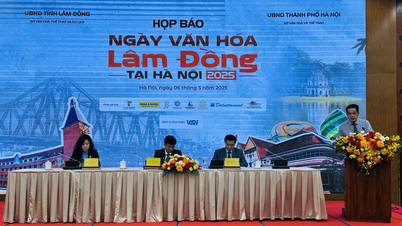











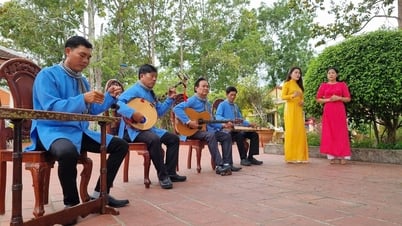








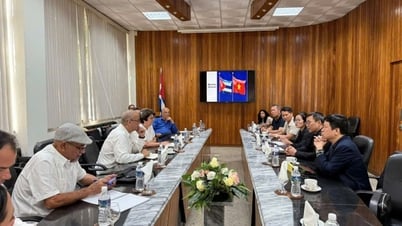



![[Photo] National Assembly Chairman Tran Thanh Man attends the Party Congress of the Committee for Culture and Social Affairs](https://vphoto.vietnam.vn/thumb/1200x675/vietnam/resource/IMAGE/2025/5/11/f5ed02beb9404bca998a08b34ef255a6)






























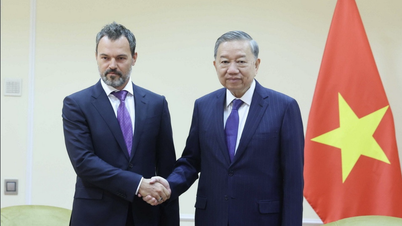

















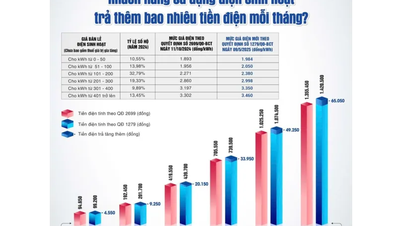


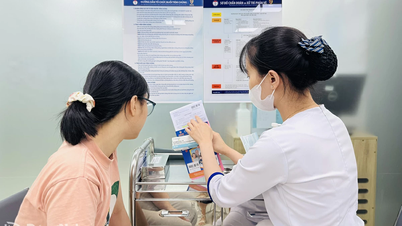

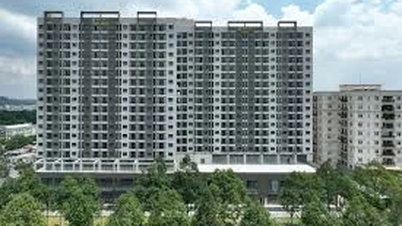








Comment (0)